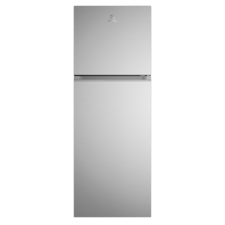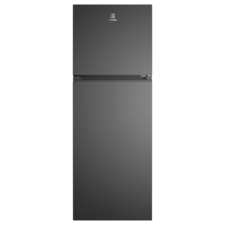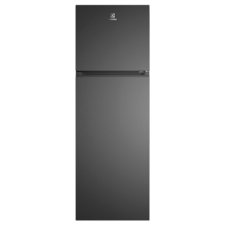Keeping your refrigerator at the right temperature not only helps you keep your food fresh, it also contributes to a more sustainable lifestyle in the process. In this article, Electrolux will explain everything you need to know about refrigerator temperature setting and extra helpful tips on how to set refrigerator temperature correctly.
What is the ideal refrigerator temperature for food freshness?
The ideal temperature setting for a refrigerator is between 1.7 and 3.3 degrees Celsius. This temperature range helps to slow down the growth of bacteria and prevent food from spoiling.

It is important to note that different parts of the refrigerator may have slightly different temperatures, so it is a good idea to use a thermometer to check the temperature in different areas of the fridge. For example, the temperature in the door shelves may be slightly higher than the temperature in the back of the refrigerator.
What temperature should a freezer be set at?
The ideal temperature for a freezer is -18 degrees Celsius or below. This temperature helps to keep food frozen and prevent the growth of bacteria and other microorganisms that can cause foodborne illnesses.
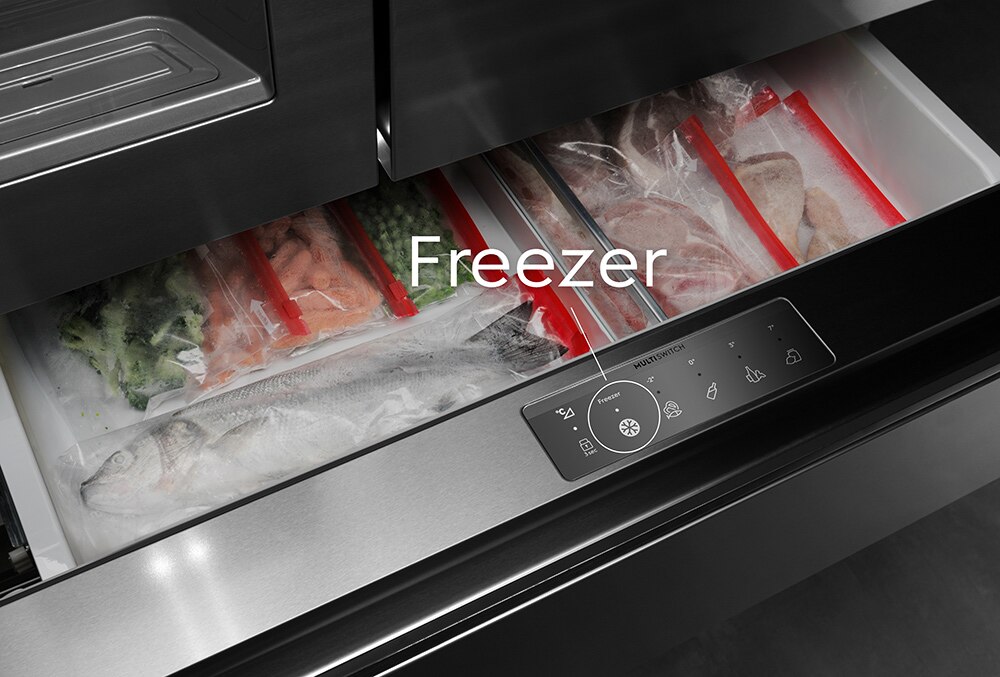
It is important to note that while the temperature in the freezer should be at or below -18 degrees Celsius, it is also important to keep the temperature as consistent as possible to ensure that the food stays frozen and safe to eat. It is recommended to use a thermometer to check the temperature in the freezer regularly and adjust the temperature settings as needed to maintain the proper temperature.
Min vs Max: How to adjust a refrigerator that’s too cold or too warm?
A refrigerator should generally not be set to its absolute minimum or maximum temperature setting. If you need to adjust a refrigerator that’s too cold and freezing items like lettuce, you’ll want to turn the setting slightly warmer (a lower number on some dials, a higher temperature reading on digital displays).
Setting the refrigerator temperature control too low can cause your food to freeze, damaging texture and flavor. Conversely, setting the temperature too high can lead to the growth of harmful bacteria and spoil your food.
Check out some tips to keep your refrigerator fresh for longer:
Adjust the fridge for energy saving: Which fridge setting is energy efficient?
Many wonder what setting saves the most electricity on a refrigerator. The most energy-efficient fridge setting is generally the recommended 1.7 to 3.3 degrees Celsius (35°F to 38°F) for the refrigerator and -18°C (0°F) for the freezer. Here’s how to adjust the fridge for energy saving:
- Maintain Ideal Temperatures: Deviating too cold makes the fridge work harder and consume more electricity. Deviating too warm risks food spoilage, which is also a waste.
- Check Door Seals: Ensure your refrigerator door seals are tight. Gaps let cold air escape, forcing the unit to use more power.
- Cool Food First: Allow hot leftovers to cool down to room temperature before placing them inside. This reduces the load on the cooling system.
- Don't Overfill (or Underfill): A moderately full fridge maintains its temperature better than an empty one. However, don't overfill to the point where air can't circulate.
- Minimize Door Openings: Decide what you need before opening the door to reduce the escape of cold air.
- Regular Defrosting (for manual defrost models): If your freezer isn't frost-free, regular defrosting improves efficiency. Ice buildup acts as an insulator, making the freezer work harder.
While some modern temperature-controlled refrigerator models might have an "eco" or "energy saving" mode, adhering to the correct temperature range and good usage habits are the primary ways to achieve energy efficiency.
Understanding your refrigerator temperature control: What are the buttons in the fridge for?
To ensure your refrigerator maintains an ideal temperature, understanding how to adjust the refrigerator temperature using its controls is key.
Depending on the make and model of your temperature-controlled refrigerator, these controls can look quite different, but they usually involve numbered dials, sliders, or digital buttons representing power levels or specific temperatures
On most modern refrigerators, the temperature controls can be found on an interior control panel or on a slider control panel on the outside.
A temperature control that is found inside the refrigerator can be touch screen, slide control or knob control and some refrigerators have two controllers. Read the setting instruction from user manual to understand the right setting for your fridge.
In some older models, the temperature control may be at the bottom or back of the refrigerator. This control may be a dial or slider, and it may be labeled with temperature ranges or numbers.
How do you use refrigerator temperature controls with numbers?
Usually, the numbers on your refrigerator’s temperature controls don’t directly correspond to temperature. That means that if you set your refrigerator to “1”, it will not automatically cool the inside of the appliance to 1 degree Celsius.
Most often, these numbers are power levels ranging from 1 to 5 or 9, with the highest number standing for the highest power level.
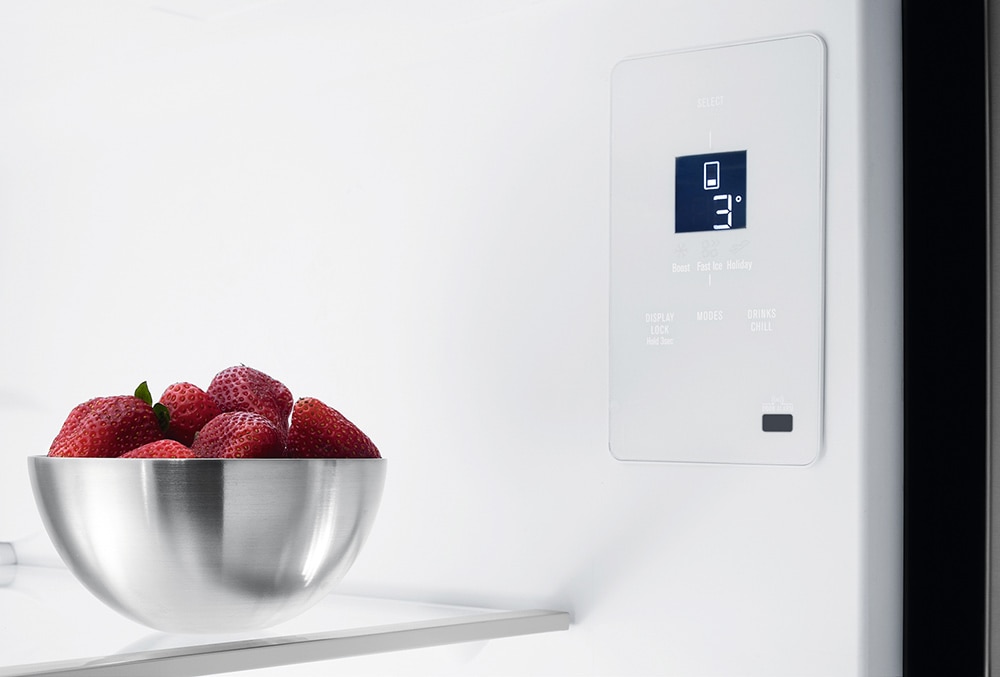
How do you use refrigerator temperature controls labeled with words?
If your refrigerator temperature controls are labeled with words such as "cold," "colder," or "coldest,", or “low”, “medium”, and “high”, you should first refer to the user manual. See if it provides guidance on how to use the temperature controls.
It may also give recommendations for the best setting for different types of food. If you’re unsure, start with the middle setting, which is often labeled as "normal" or "recommended."
Some helpful food storage tips:
Extra tips to keep your refrigerator cool
To make sure the temperature inside your refrigerator stays evenly cool, it is important to make sure that the appliance is not overloaded, as this can interfere with the circulation of air and cause some areas to be colder than others. It’s also a good idea to keep the refrigerator door closed as much as possible so the cold air can’t escape.
An Electrolux refrigerator offers a wide variety of technologies that help you keep your refrigerator cool and your food fresh and tasty.
The EvenTemp technology minimizes temperature fluctuations by cooling each shelf individually, creating a more consistent temperature. TwinTech Cooling keeps temperature and humidity levels stable while QuickChill lets you cool large amounts of fresh food quickly.
Electrolux refrigerators come with TasteLockAuto feature that keeps produce fresh for longer.
If you are on the market for a new fridge, learn helpful refrigerator buying tips or take a look at our best-selling Electrolux refrigerators below:
-
- AI AutoSense saves up to 10% energy*.
- Retains up to 90% Vitamin C after 7 days*.
- ExtraChill drawer ideal for deli meats and cheese.
-
- AI AutoSense saves up to 10% energy*.
- Retains up to 90% Vitamin C after 7 days*.
- ExtraChill drawer ideal for deli meats and cheese.
-
- AI AutoSense saves up to 10% energy*.
- Retains up to 90% Vitamin C after 7 days*.
- ExtraChill drawer ideal for deli meats and cheese.
FAQs about refrigerator temperature
-
What temperature should my refrigerator be set to?
The recommended temperature for a refrigerator is between 2 and 3 degrees Celsius. However, some refrigerators can go lower than this temperature.
-
What temperature should my freezer be set to?
The recommended temperature for a freezer is between -18 and -15 degrees Celsius. It's not recommended to set your freezer to the coldest setting as it can cause ice buildup in the freezer. It can also cause your freezer to work harder than it needs to, which can increase your energy bills and potentially shorten the lifespan of your appliance.
-
How can I check the temperature in my refrigerator?
You can use a refrigerator thermometer to check the temperature in your refrigerator. Place the thermometer in the main compartment or in the area where you want to monitor the temperature.
-
Why is it important to monitor the temperature in my refrigerator?
Monitoring the temperature in your refrigerator is important to ensure that your food stays fresh and safe to eat. A temperature that is too warm can cause food to spoil, while a temperature that is too cold can freeze certain foods and affect their quality.
-
How often should I adjust the temperature controls on my refrigerator?
You should adjust the temperature controls on your refrigerator as needed, based on the temperature readings and your specific needs. Check the temperature periodically and adjust the controls if necessary.

